Embracing Your Child’s Unique Mind: A Parent’s Guide to Neurodivergent Development
The Narrative:
Traditional parenting advice often assumes all children develop, communicate, and experience the world in similar ways. When your child processes information differently or responds to situations in unexpected ways, these conventional approaches can lead to frustration for both of you. You might find yourself wondering why strategies that work for other families don’t seem to help, or feel concerned when your child’s development follows its own unique path.
The Shift:
Understanding how your child experiences the world is the foundation of effective parenting. For parents of neurodivergent children, this understanding requires looking beyond traditional parenting approaches to discover the unique ways your child processes information, expresses emotions, and connects with others. By adapting your approach to match your child’s natural patterns, you can transform daily challenges into opportunities for connection and growth.
Understanding Your Child’s Neural Symphony
Think of your child’s brain as an orchestra playing a unique composition. Just as every orchestra has its own interpretation of a piece of music, every neurodivergent child has their own way of processing and responding to the world. This difference isn’t a deficit—it’s a variation in how the brain orchestrates its responses to information, emotions, and experiences.
The Neuroscience of Different Minds
Your child’s brain processes information through complex neural networks that may be wired differently from neurotypical patterns. This unique wiring affects various aspects of their experience:
Sensory Processing:
Their brain might register sensory input more intensely or differently than others. What seems like a gentle touch to you might feel overwhelming to them, or what appears as subtle background noise might sound like an overwhelming symphony.
Emotional Processing:
Their emotional responses may be more intense or expressed differently. What looks like an “overreaction” is often a genuine response to their heightened experience of the world.
Executive Function:
Their brain might organize tasks and information in unique ways, leading to different approaches to planning, organization, and completion of activities.
Social Processing:
They might understand and respond to social cues in their own way, creating a different but equally valid approach to building relationships.
Creating a Supportive Environment for Growth
The Foundation: Understanding Before Action
Before implementing any parenting strategies, take time to observe and understand your child’s unique patterns:
Sensory Preferences:
-
- What environments help them feel calm?
- Which sensory experiences cause distress?
- How do they seek comfort when overwhelmed?
Communication Styles:
-
- How do they best express their needs?
- What forms of communication seem most natural to them?
- What signs indicate they’re feeling overwhelmed or misunderstood?
Learning Patterns:
-
- What captures their interest most deeply?
- How do they approach new information?
- What conditions help them focus and engage?
Building Daily Success Through Routine
Structure provides security, but it needs to be the right kind of structure—one that works with your child’s natural rhythms and preferences.
Morning Routines:
-
- Allow extra time for transitions
- Incorporate preferred sensory activities
- Use visual guides for each step
- Build in choices to promote autonomy
After-School Transition:
-
- Provide a quiet space for emotional regulation
- Offer sensory tools for self-soothing
- Allow time before starting homework or activities
- Include movement breaks as needed
Evening Wind-Down:
-
- Create a consistent bedtime sequence
- Include sensory-calming activities
- Use visual schedules for predictability
- Build in connection time
Communication That Connects
Effective communication with your neurodivergent child requires adjusting your approach to match their processing style:
Clear and Concrete Language:
-
- Instead of: “It’s time to get ready.”
- Try: “First put on your shirt, then your pants, then your socks.”
Visual Supports:
-
- Use pictures to show sequence of tasks
- Create visual schedules for daily routines
- Implement visual timers for transitions
- Develop visual charts for choices and consequences
Processing Time:
-
- Wait longer for responses than you might expect
- Avoid rushing decisions or reactions
- Give advance notice of changes or transitions
- Allow time to process emotional experiences
Supporting Emotional Development
Emotional regulation is a journey of discovery for both parent and child:
Co-Regulation Techniques:
-
- Maintain your own calm state
- Acknowledge their feelings without judgment
- Offer physical presence without demands
- Use simple, reassuring phrases
- Wait patiently for their system to regulate
Creating Emotional Safety:
-
- Validate feelings without trying to change them
- Create safe spaces for emotional expression
- Teach identification of emotional states
- Model healthy emotional expression
Celebrating Strengths and Supporting Challenges
Focus on building confidence through recognition of natural abilities:
Strength Recognition:
-
- Notice and name specific strengths
- Create opportunities for success
- Share observations of growth
- Celebrate unique perspectives
Challenge Support:
-
- Break complex tasks into manageable steps
- Provide tools and accommodations as needed
- Teach self-advocacy skills
- Celebrate effort and progress
Real Family Journeys
The Power of Understanding
Maria discovered her son’s intense interest in patterns wasn’t just a fixation—it was his way of making sense of the world. By incorporating pattern-based learning into daily activities, she transformed struggles into opportunities for connection and growth.
Finding Their Rhythm
The Johnson family learned that their daughter’s resistance to morning routines wasn’t defiance—it was sensory overwhelm. By adjusting lighting, reducing morning demands, and creating a sensory-friendly environment, they turned chaotic mornings into peaceful transitions.
Building Bridges
Tom and Sarah worried about their child’s different way of playing and interacting. Through parent coaching, they learned to join their child’s world rather than trying to pull them into traditional play patterns. This shift led to deeper connection and more natural social development.
Remember that parenting a neurodivergent child is a journey of mutual growth and discovery. By understanding your child’s unique mind and adapting your approach to match their natural patterns, you create an environment where both you and your child can thrive together.




